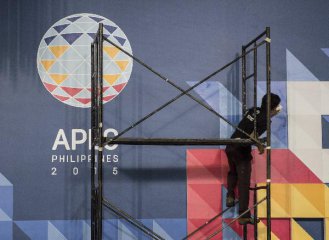
China's Belt and Road Initiative has become a hot topic in Latin America as it has gained momentum during the just concluded Asia-Pacific Economic Cooperation (APEC) Economic Leaders' Meeting held in the Peruvian capital.
"Very great, and very much of a global perspective and pattern," said Peruvian veteran diplomat Gonzalo Gutierrez, referring to Chinese President Xi Jinping's remarks on the initiative at Saturday's APEC CEO Summit.
Gutierrez said that it is his hope to see the "silk road" reach Latin America across the Pacific.
The Chinese initiative comprises the Silk Road Economic Belt and the 21st Century Maritime Silk Road. Its influence in Asia, Europe, Africa and now, Latin America, should suffice to put it on an important agenda worldwide. Only three years since its launch, it has found more than 100 participants and advocates, including countries and international organizations, Xi told the CEO summit in a keynote speech.
A number of major projects within its framework are going on with the support of the Asian Infrastructure Investment Bank and the Silk Road Fund.
Such progress and results have gone far beyond the expectations of some international observers.
They at first regarded the initiative as only an extension of the Chinese diplomacy as well as a fresh version of South-South or regional cooperation. Its alignment with the development strategies of participants, such as Mongolia, Kazakhstan, Vietnam and Poland, has helped enlarge cooperation in sectors ranging from trade, investment, infrastructure, production capacity to financing and people-to-people exchanges. Connectivity is another keyword in relation to it.
"Three years ago, I put forward the Belt and Road Initiative. It aims to strengthen connectivity to facilitate free flow of factors of production and create a platform of win-win cooperation and shared benefits for all," Xi said at the CEO summit.
By the first half of 2016, China has had 39 railway expresses to Europe in operation, connecting transport infrastructure in the Asian, African and European areas involved.
As for countries along the initiative routes, China's trade with them totaled 3.1 trillion U.S. dollars, or 26 percent of its foreign trade total in the 36-month period ending this June.
The cooperation zones it co-built have so far pooled enterprises with a collective output of 47.5 billion dollars.
The guiding principles of extensive consultation, joint contribution and shared benefits have helped make the initiative a chorus instead of a solo. For example, Italy has recently become another one developed nation intending to join it.
The Chinese initiative has been increasingly deemed as providing a solution to global economic difficulties and uncertainties worsened by global challenges including a sluggish recovery, trade and investment downturns, a lack of growth momentum and setbacks in globalization.
The Belt and Road Initiative has an epoch-making global influence and significance far beyond Eurasia and countries along its routes, according to Guntram Wolff, head of Bruegel, a well-known European think tank devoted to policy research on international economic issues.
























Latest comments